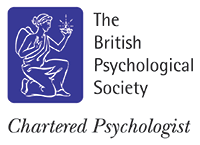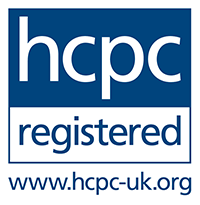Learning to write presents one of the biggest challenges pupils face at school. It’s a skill that opens doors to success in education, life, and work. When children struggle to express their ideas in writing, they’re likely to face difficulties across the entire curriculum, not just in English.
This month, the Department for Education (DfE) released The Writing Framework. This guidance aims to support primary schools in ensuring every child leaves with the writing skills they need. At Psychology Direct, we’re here to help you understand this document and explore practical ways to develop confident writers in your schools.
Why Writing Matters
The national curriculum states that by the end of year 6,
… pupils’ reading and writing should be sufficiently fluent and effortless for them to manage the general demands of the curriculum in year 7, across all subjects and not just in English.
Writing creates opportunities for young people to express themselves clearly and fluently in education and future employment. Beyond academics, it offers pupils opportunities to share attitudes, opinions, judgements, and ideas. Writing aids thinking and learning, helping pupils process information more deeply and cement knowledge in long-term memory. It’s also crucial for developing social relationships and can be a powerful form of self-expression and creativity.
Our perspective: We understand that writing isn’t just about literacy. It’s a cognitive and emotional process that connects directly to a child’s confidence, their ability to organise thoughts, and their overall well-being.
The Writing Framework’s Core Principle
The framework is built on the Simple View of Writing, which explains that proficient writing needs two components working together:
Transcription (handwriting and spelling) – the physical and technical skills and Composition (articulating and structuring ideas) – the thinking and creativity.
When children haven’t mastered transcription, their working memory is overloaded trying to form letters and spell words. This leaves little mental space for creative thinking or expressing ideas. The framework emphasises getting transcription skills automatic early on, so children can focus on what they want to say.
What This Means for Your School: Review whether your current approach gives enough dedicated time to handwriting and spelling instruction, separate from creative writing lessons.
Starting Strong in Reception: What Good Practice Looks Like
The framework places reception at the heart of writing success. Rather than expecting children to write stories, the focus should be on building firm foundations.
In practice, this means:
- Daily handwriting lessons starting in term 1, teaching correct letter formation and pencil grip
- Oral composition where children say sentences out loud before attempting to write them
- Dictation practice where children write letters, words, and then simple sentences the teacher says
- No pressure for extended writing but plenty of opportunities to practise the building blocks
What might need to change: If your reception classes currently focus on creative writing or expect children to write stories independently, you may need to shift towards more structured skill-building.
The Sentence-First Approach: Building From the Ground Up
One of the framework’s strongest messages is that the best way to teach writing is by teaching children to master sentences first. This means understanding that every sentence needs a subject (who or what) and a verb (what they do).
Practical sentence activities include:
- Sentence combining – taking two simple sentences and joining them with conjunctions
- Adding detail – starting with “The dog ran” and building to “The enormous dog ran quickly through the muddy field”
- Oral rehearsal – children saying their sentence aloud before writing it down
Progression in practice: Year 2 might focus on simple sentences with correct full stops and capital letters. Year 4 builds to sentences with fronted adverbials and relative clauses. Year 6 develops complex sentences with varied structures for effect.
What This Means for Your School: Look at whether your writing lessons spend enough time on sentence-level work before expecting children to write paragraphs or whole texts.
Handwriting: The Practical Details That Matter
The framework is specific about handwriting because poor handwriting significantly impacts writing quality and confidence.
Key practical elements:
- Tripod grip teaching with finger positioning guides
- “Ready to write” routines covering posture, paper position, and pencil hold
- Left-handed adaptations including paper slanting and seating arrangements
- Daily practice until handwriting becomes automatic
- Joining letters only after children can form individual letters correctly
What might need to change: Many schools may need to increase dedicated handwriting time and ensure all staff model consistent letter formation.
Practical Strategies to Support Every Writer
The framework emphasises that all children, including those with Special Educational Needs (SEND), should receive high-quality writing instruction within the classroom rather than being withdrawn.
Practical support strategies:
- Identify specific barriers – is it handwriting, spelling, sentence structure, or idea generation?
- Provide scaffolds within lessons – sentence stems, word banks, or planning frameworks
- Use oral composition for children whose transcription skills aren’t ready for their ideas
- Consider assistive technology for children with significant physical barriers to handwriting
For children with specific needs:
- Developmental Language Disorder – extra time for oral composition and visual prompts
- Dyslexia – explicit teaching of spelling patterns and morphology
- Developmental Coordination Disorder – additional handwriting support and possibly assistive technology
The Writing Process: What It Looks Like at Different Ages
The framework outlines five phases of writing (planning, drafting, revising, editing, sharing) but emphasises that these look different depending on the child’s age and writing ability.
Year 2 example: Planning might be drawing pictures or talking about ideas. Drafting could be writing single sentences. Revising might be reading aloud to check that it makes sense.
Year 6 example: Planning involves detailed story mountains or argument structures. Drafting includes writing multiple paragraphs. Revising focuses on improving cohesion and impact.
What This Means: Don’t expect young children to engage with all phases in the same way as older pupils. Match expectations to capability.
Leadership for Writing and Making It Work
The framework emphasises that successful writing teaching needs strong leadership and whole-school consistency.
Practical leadership actions:
- Appoint a writing lead who understands the progression from reception to Year 6
- Ensure consistent terminology so children hear the same language about writing across all classes
- Embed writing routines across subjects – not just in English lessons
- Use the framework’s audits to evaluate current practice and identify priorities
- Plan implementation over time – the framework suggests securing transcription first, then building composition skills
Assessment That Helps Learning
The framework distinguishes between formative assessment (ongoing, in-the-moment feedback) and summative assessment (periodic evaluation of progress).
Practical assessment approaches:
- Observe children as they write to spot difficulties with handwriting or spelling
- Use dictation to assess transcription skills separately from composition
- Focus feedback on specific, actionable improvements rather than general praise
- Regular handwriting and spelling checks to ensure skills are developing
What This Means For Monday Morning
Reading this framework, schools might consider:
- Audit current practice using the framework’s checklists
- Review reception provision – are you building strong enough foundations?
- Evaluate sentence-level teaching – do children master single sentences before moving to paragraphs?
- Check handwriting instruction – is it daily, explicit, and consistent?
- Consider staff training – do all teachers understand the progression in writing development?
Moving Forward
The DfE’s new Writing Framework provides a clear, evidence-based roadmap for improving writing standards. It reinforces that teaching writing is a cumulative process requiring dedicated attention to both transcription and composition skills.
The framework includes detailed audits for each section, progression charts, and practical examples that schools can use immediately. It’s not asking schools to revolutionise their practice overnight, but rather to ensure all elements of writing development receive appropriate attention.
We’re committed to supporting clusters of schools and Local Authorities in implementing these guidelines. By understanding how writing develops and providing tailored psychological expertise, we help every pupil tackle increasingly complex written tasks and see writing as a powerful medium for learning, expression, and creativity.





